Under the Volcano
A Seattle painter creates friendly portraits of volcanoes in part to mitigate fears of complete system failure.
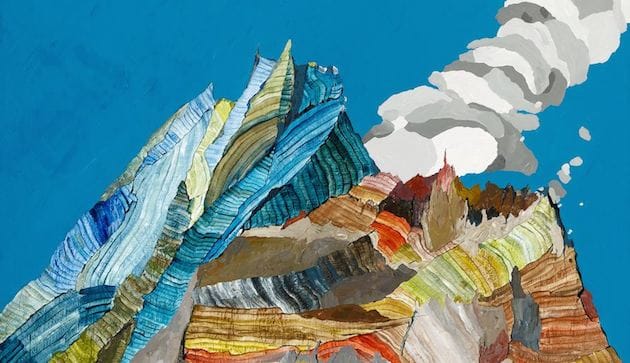
Interview by Rosecrans Baldwin
The Morning News: How afraid are you of volcanoes?
Ryan Molenkamp: I’m not as afraid as I should be, although I do occasionally freak out about all the terrible scenarios projected in the next 50 years with climate change, or the possibility of an asteroid striking the Earth. Or, I was reading about how we dodged, a few years back, a terrible solar storm that would have sent out electromagnetic radiation, that, had it hit Earth, essentially would have knocked out all electronics operating at the time. God only knows what would befall society if that were to happen—would it be chaos or would people band together to get everything back up and running? But these things don’t usually keep me up at night. Usually. It’s the lack of planning (silly humans) for such eventualities, or smaller eventualities like floods and fires, that worry me. That’s the kind of thinking that gets us into trouble, or, say, leads us towards potential system failure (see: climate change). Continue reading ↓
Works from the Fear of Volcanoes series are currently on view as part of the “Made in the Northwest” show at SAM Gallery. All images used with permission, copyright © the artist, all rights reserved.
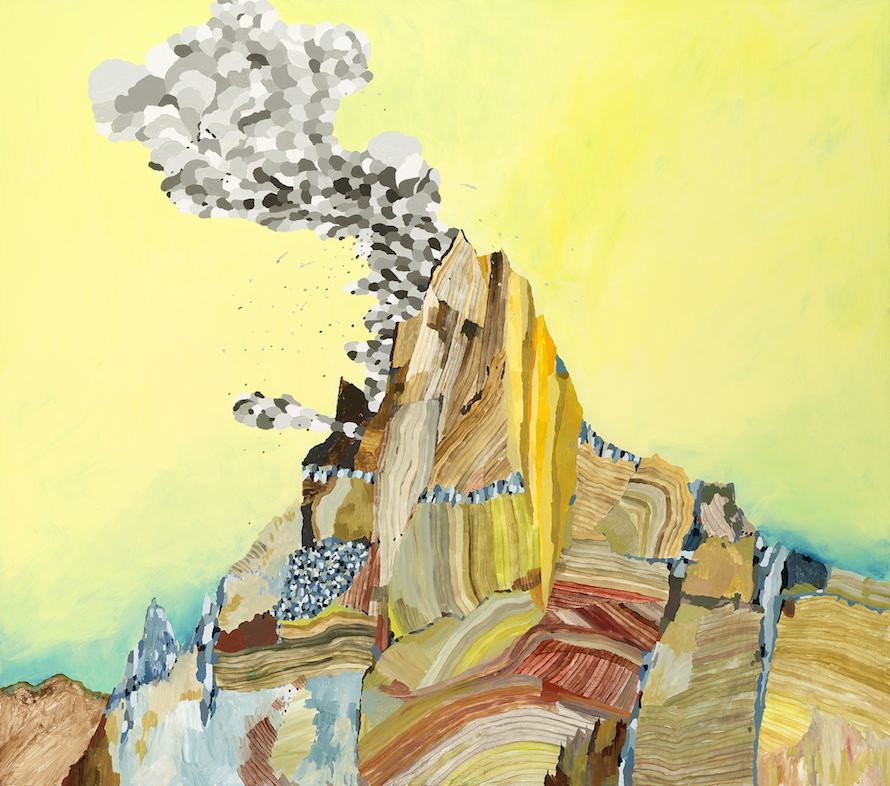
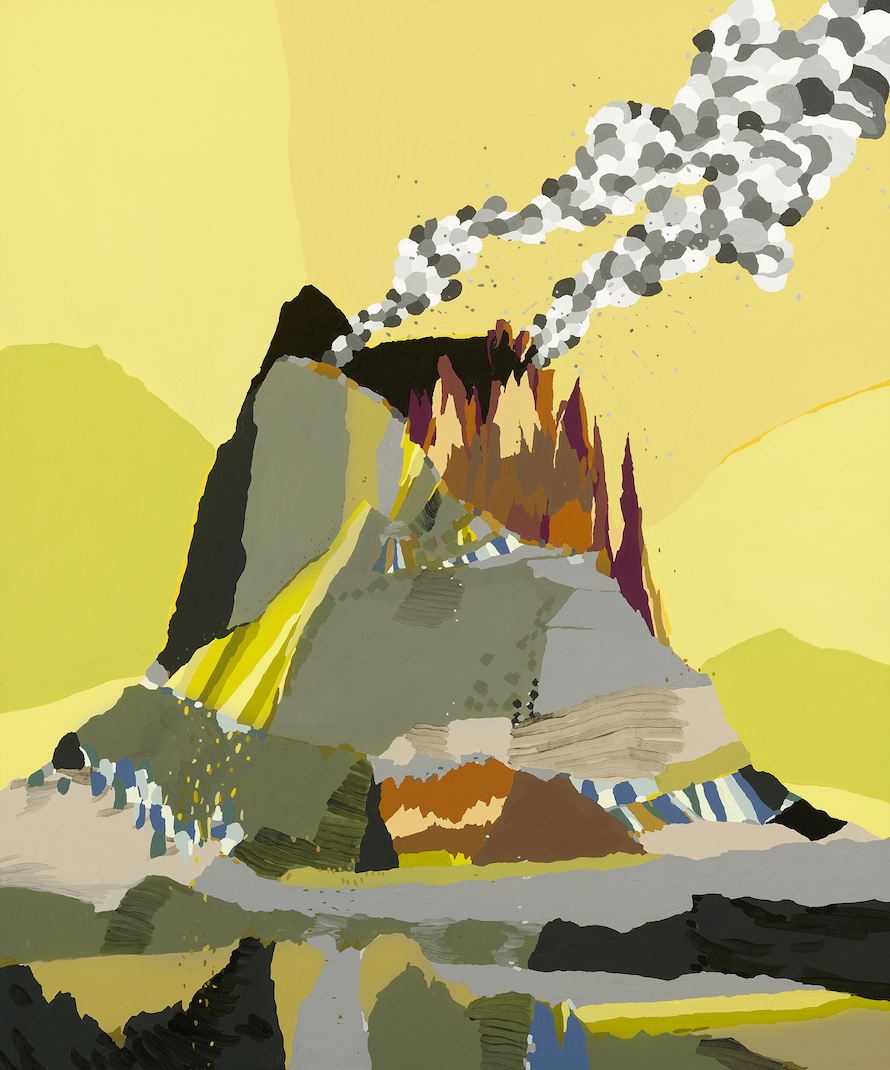
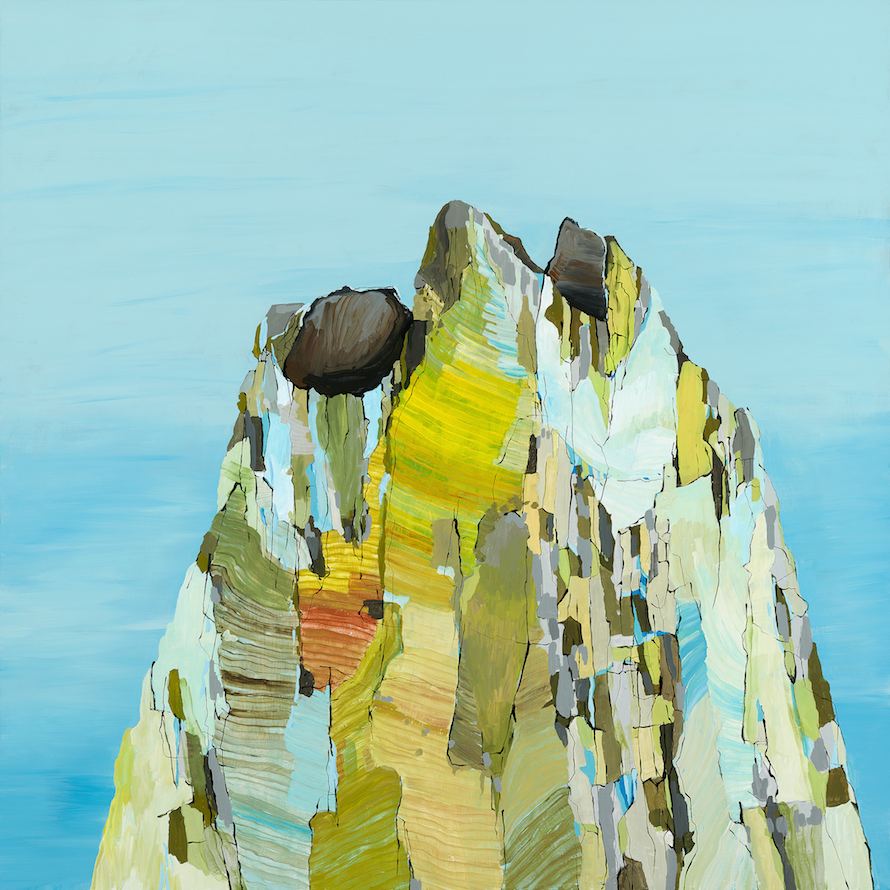
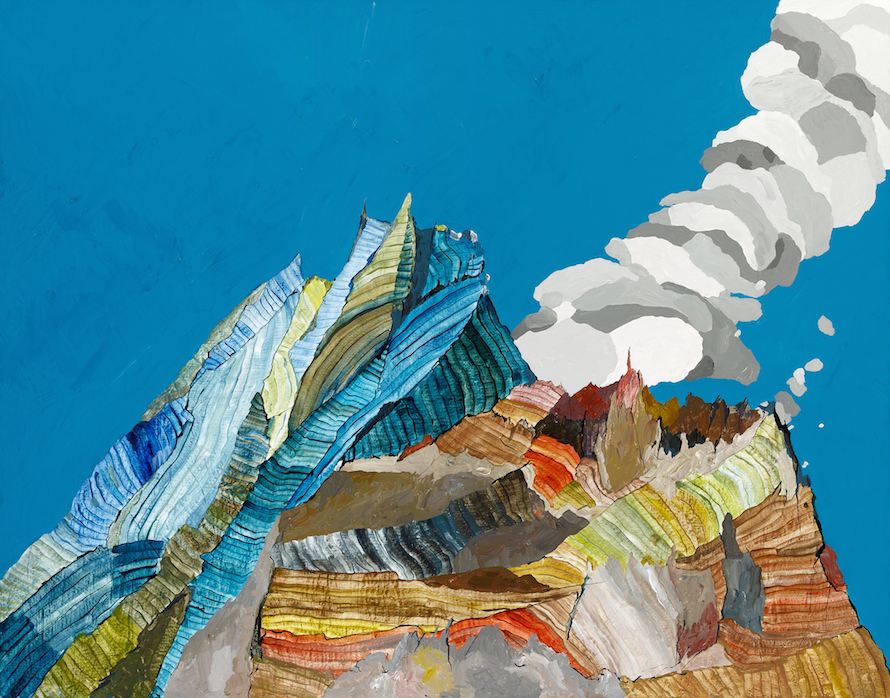
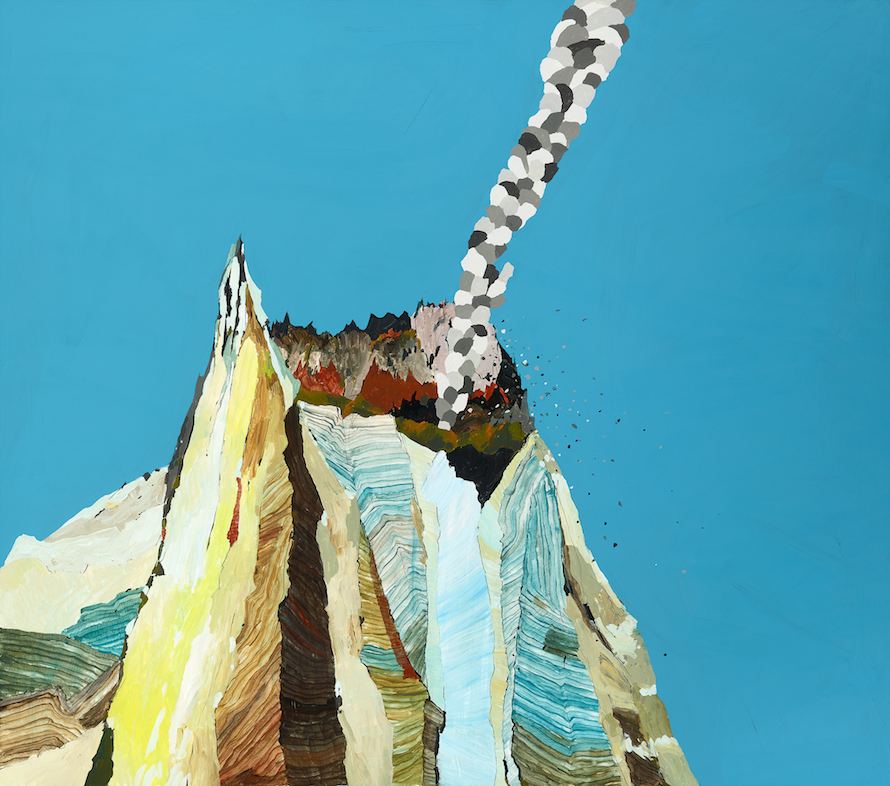
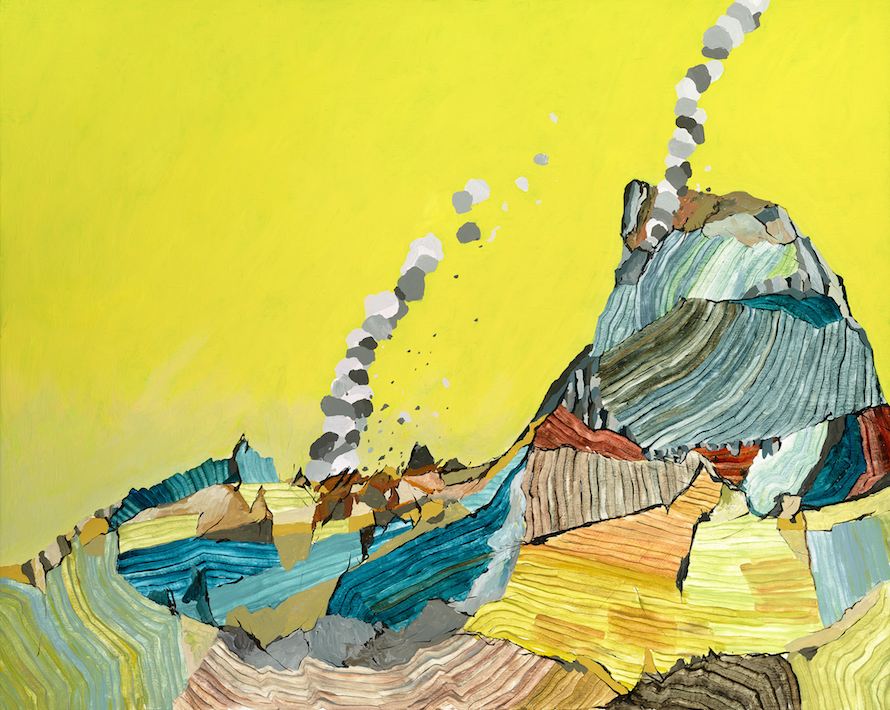
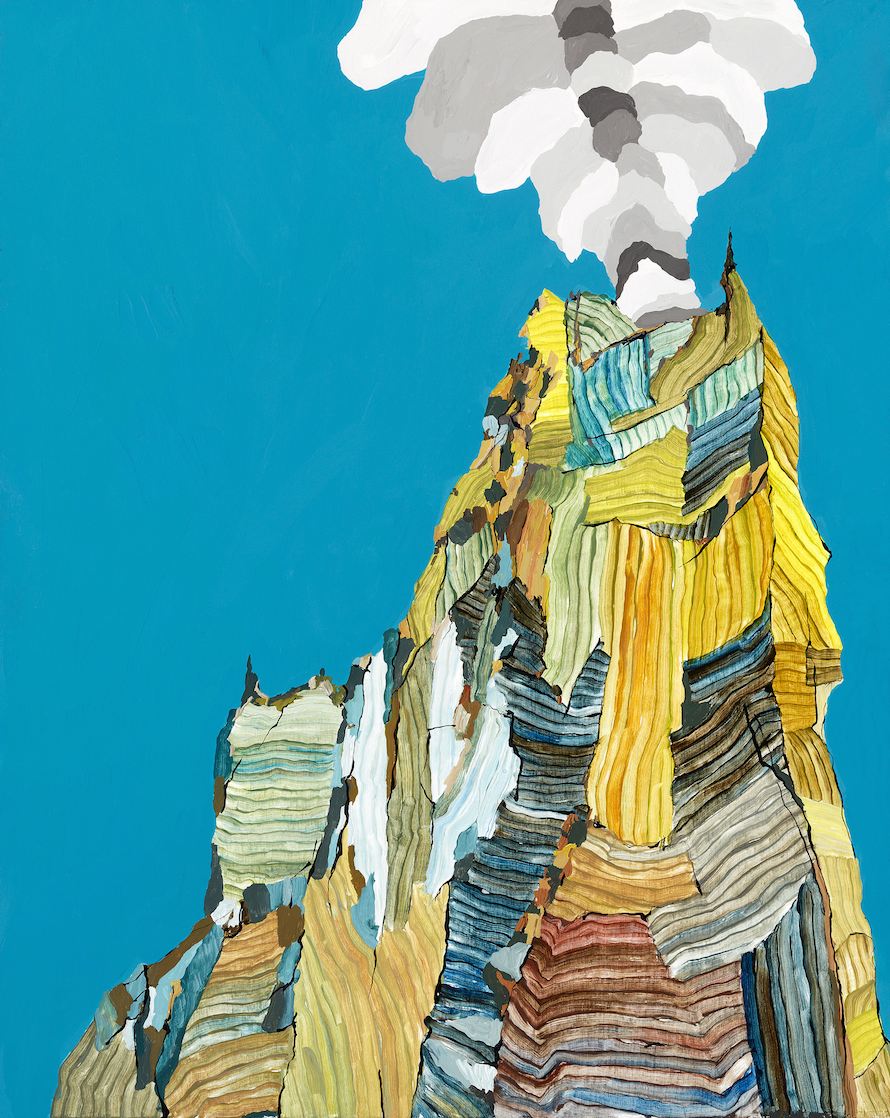
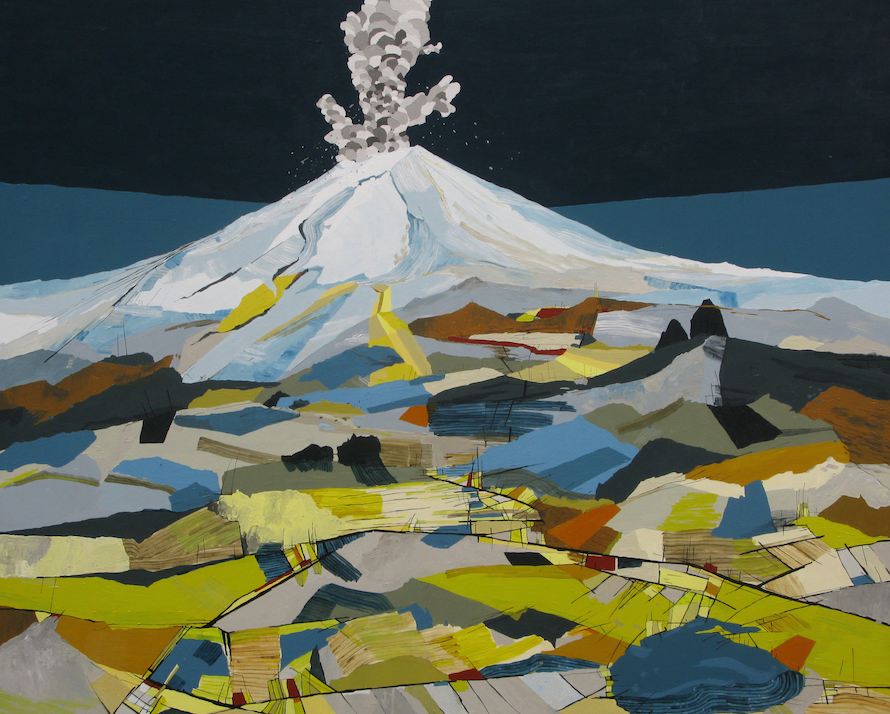
Interview continued
TMN: In other series, you seem focused on terrain, topography, even ruins. Is the ground more interesting than the people who walk on it?
RM: Oh my, this question could get me in trouble with my loved ones! I wouldn’t say it’s more interesting to me, but I just don’t have the urge to describe people in my artworks, directly. I’m interested in our experience with the landscape, how we shape it, build upon it, impress ourselves into a space. But the short truth is that I was just never taken by rendering the figure—it always felt too literal to me.
TMN: What preoccupied you most when you were creating this series?
RM: Relaxing into the work was difficult. I had so many ideas, and still do, with where I want to take this series, and I want to get them all done right away right now! Settling down and not getting too wrapped up in all the possibilities, all the directions. There are still many volcanoes I want to paint, both real ones and imaginary ones.
TMN: Then what makes one volcano more or less interesting to you, as a subject?
RM: I’m fascinated by so many volcanoes that I’ve read about, that have had large and small impacts on humanity. Krakatoa, Eyjafjallajökull, and of course Vesuvius. I’m really interested in volcanoes that loom over large cities and populations, such as Mt. Fuji, but it’s the volcanoes I grew up with in the Pacific Northwest that I’m personally interested in.
I was only three when Mount St. Helens erupted. It had a lasting impact. One of my favorite books as a kid was a time-lapse photo book of the mountain’s eruption. And Yellowstone—the massive sunken caldera that could explode again with global implications. It’s so massive that it’s hard to even fathom! It’s the volcanoes that I’ve experienced myself, hiked around and lived under, that are the most interesting. But honestly I want to paint them all.
TMN: What was the first piece of art you ever sold?
RM: Truth be told my parents bought the first piece I showed at a proper gallery, during my school days. But I recall a painting I sold just after finishing up school. It was to a friend of a peer, a fellow I had never met, and he talked to me about seeing this work in a show (our mutual friend was in that show, too) and how he really wanted to do something special for himself even though it cost him a whole paycheck on a tight budget… It just meant a lot to me that someone wanted this thing in their life and would be willing to spend a great deal of their resources on it.
TMN: When are you technically least confident as a painter?
RM: I was terrified a few years ago, when I gave up oil painting for migraine issues, that by moving to acrylics I wouldn’t be able to create paintings that worked, that I wouldn’t find a path. Making that switch put me on dicey ground with the brush in hand. But it actually led to many new, different directions, and really after about two years of learning acrylics (and gouache too) I know I can do something that I’m at least interested in, with those paints. But I’m not sure I’ll ever be 100% confident. The work continues to be a struggle, but it’s one that I love.
TMN: The British reformer Havelock Ellis wrote, “All civilization has from time to time become a thin crust over a volcano of revolution.”
RM: I never mix art and politics. (Laughs.) Really, it’s a great metaphor, when I think about how I should be, we all should be more afraid, more aware, of volcanoes and other natural disasters—see: climate change, again. It is that same mentality—it’s OK to build this city at the foot of Mt Rainier because it’s just so unlikely that it will explode anytime soon, right? Everything seems fine and stable because it’s working so well, it’s so beautiful—never mind the little fissures and cracks and occasional steam leaks. Does that remind us of any civilizations right now? The real questions is will environmental disasters as they become more global and larger, will they expose the cracks in civilization or will they unite people for a change? I’m hoping for the latter but I expect the former.
